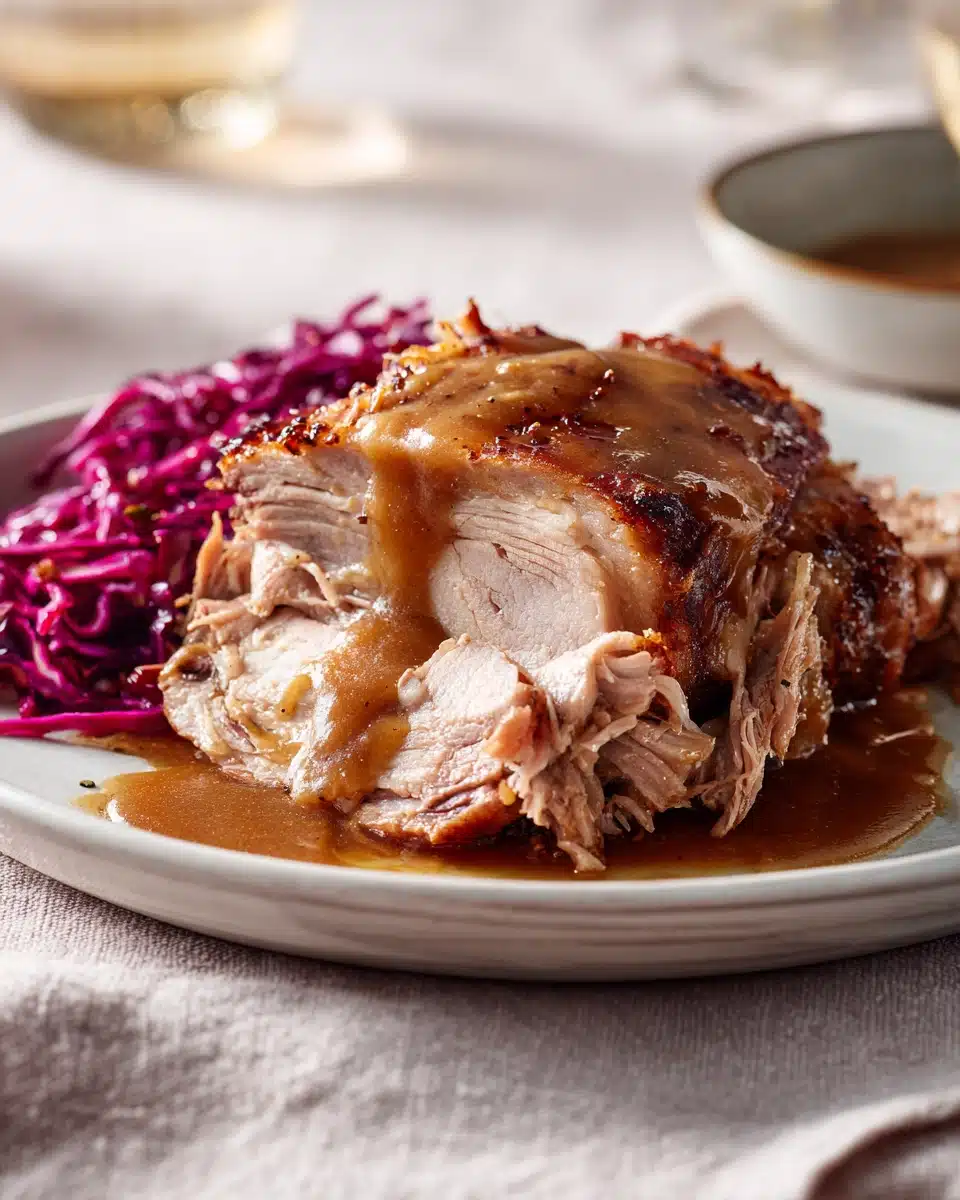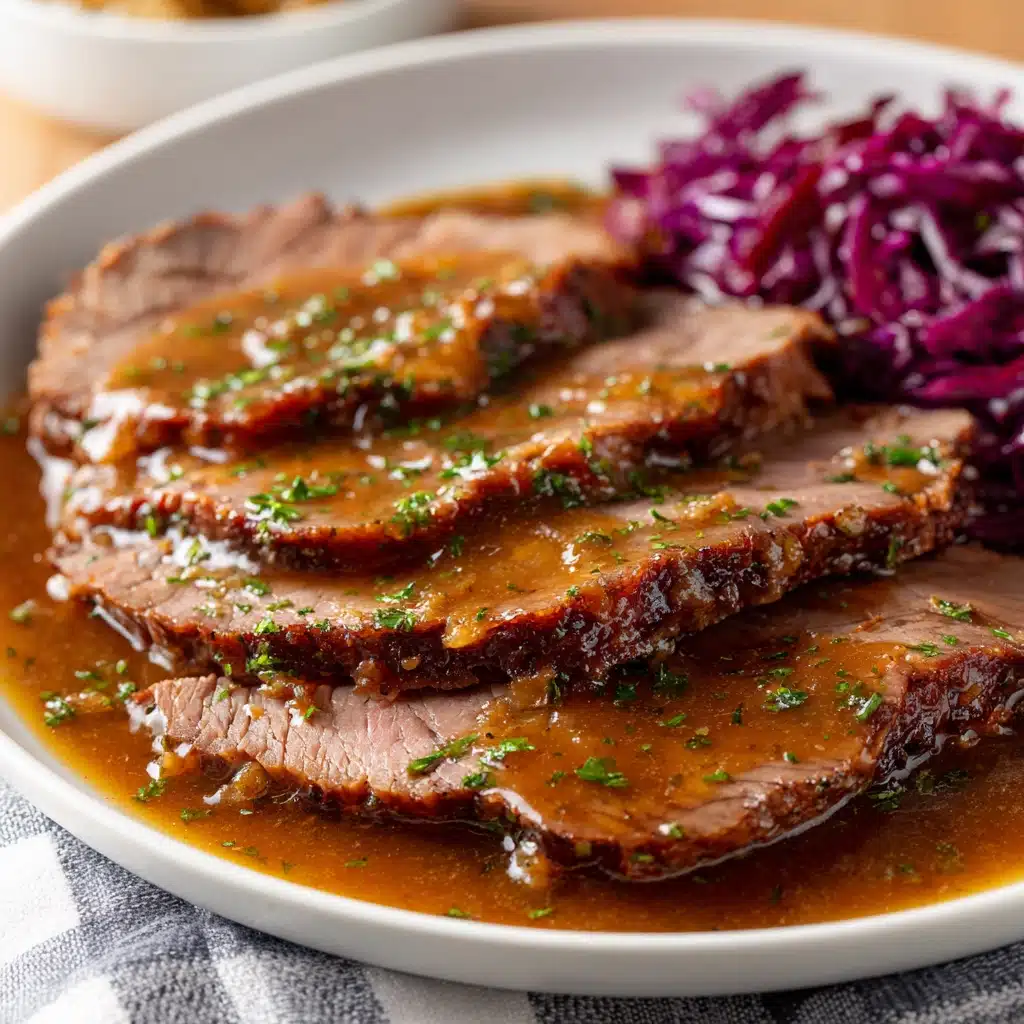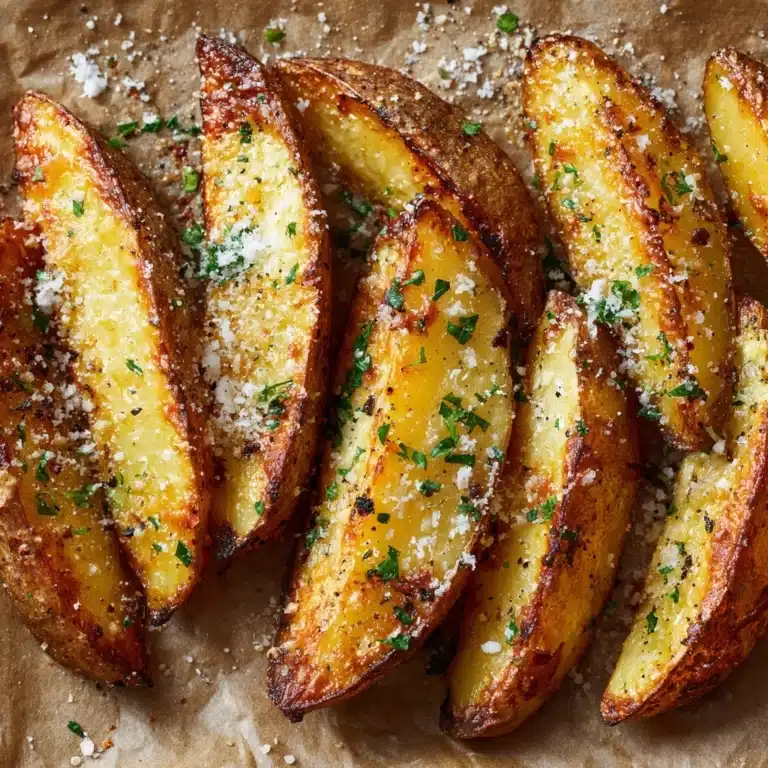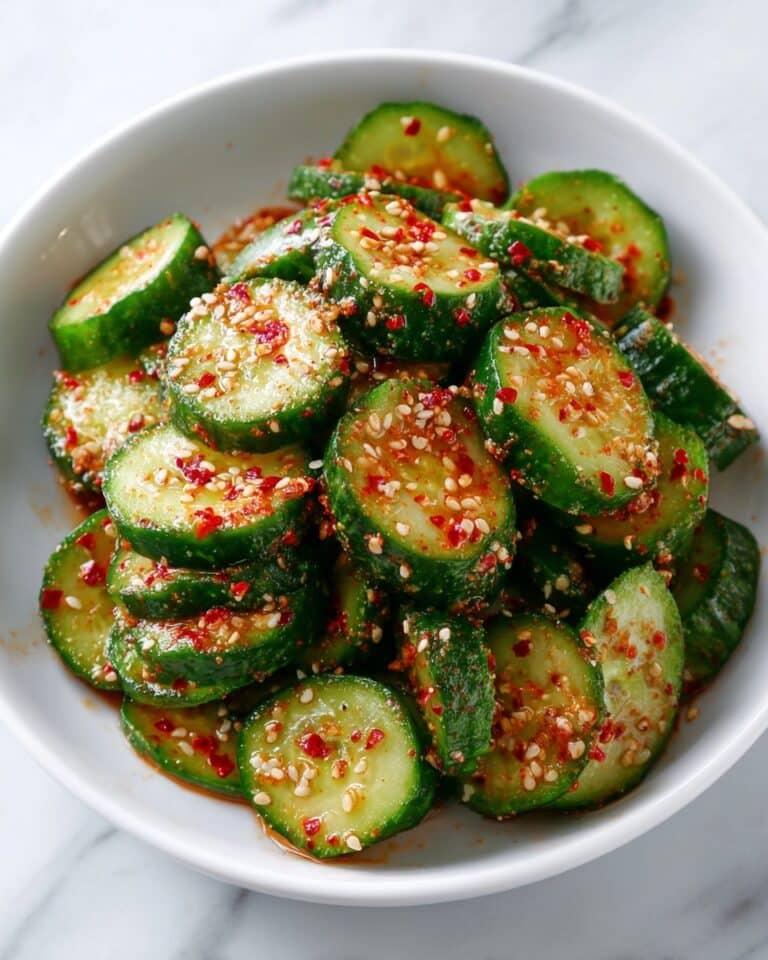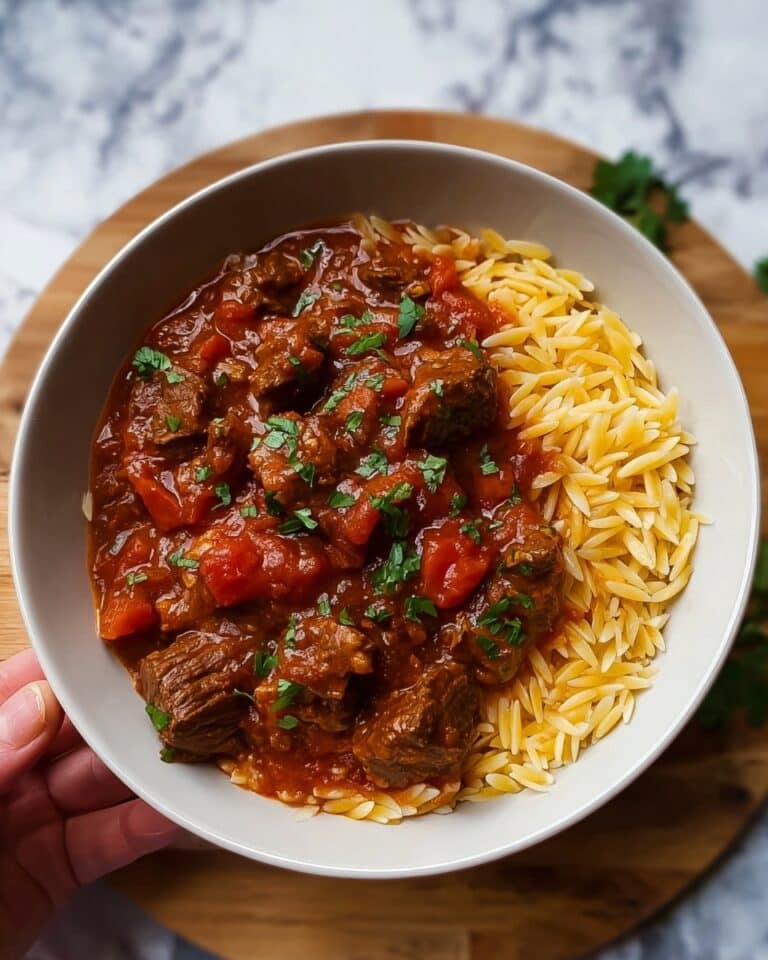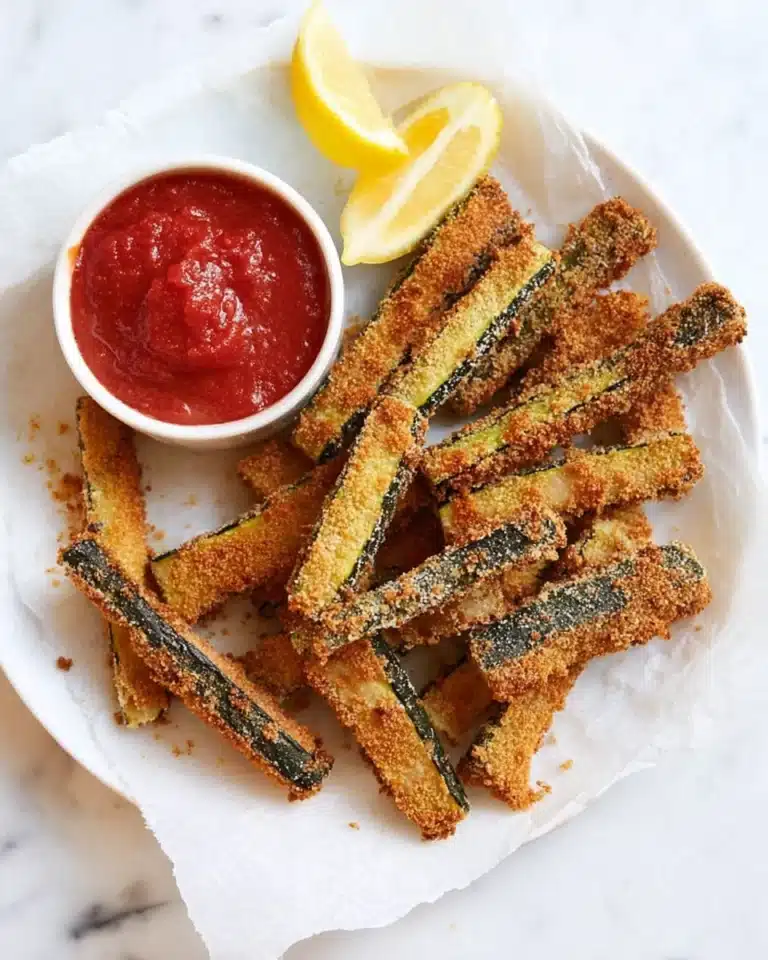Traditional Sauerbraten is one of those comfort dishes that instantly fills your kitchen with the irresistible aromas of sweet, tangy, and savory goodness. This iconic German pot roast boasts a marvelously tender texture, rich with flavor from its days-long marinade. It’s the kind of meal that brings families together, perfect for a cozy weekend or impressive holiday feast. If you’re ready to explore the world of German home-cooking, this recipe is a heartfelt way to start!
Ingredients You’ll Need
Getting started with Traditional Sauerbraten doesn’t require anything too fancy, but each ingredient carries its weight in the final flavor. From the essential spices that perfume the marinade to the humble vegetables that form its base, every item on this list helps build deep complexity and classic color.
- Beef roast (typically boneless chuck or rump): Choose a well-marbled cut for ultimate tenderness after marinating.
- Onions: These add aromatic sweetness and help to mellow out the marinade’s tang.
- Carrots: Classic for lending mellow sweetness and hearty substance to the pot roast.
- Celery: Offers depth and an earthy backbone, balancing robust flavors.
- Red wine vinegar: The key marinade ingredient that tenderizes the meat and brings the signature punchy tang.
- Dry red wine: Adds richness, complexity, and gives the sauce its gorgeous color.
- Beef broth: Infuses extra savory undertones, ensuring a flavorful braise.
- Bay leaves: Essential for a subtle herbal lift that rounds out the stew’s aroma.
- Whole cloves: These tiny flavor bombs add warmth and a tiny bit of spice.
- Juniper berries (optional but traditional): Pop in for an authentic, woodsy note that’s unmistakably German.
- Black peppercorns: Give gentle, warming spice throughout the marinade.
- Raisins: Conventional in many Traditional Sauerbraten recipes—they add subtle sweetness to balance the acidity.
- Brown sugar or gingerbread crumbled: A small amount brings richness and that hint of comforting sweetness.
- Gingersnap cookies (crushed): The finishing thickener, turning pan juices into a uniquely tangy-sweet sauce.
- Salt and freshly ground black pepper: Essential for seasoning at every step.
How to Make Traditional Sauerbraten
Step 1: Prepare the Marinade
Start your Traditional Sauerbraten adventure with the marinade, which is the heart and soul of this dish. In a large, non-reactive bowl or glass container, combine red wine vinegar, red wine, bay leaves, whole cloves, juniper berries (if you have them), peppercorns, and a sprinkle of salt. Drop in chopped onions, carrots, and celery. Give everything a good stir—the mixture should smell pungent and inviting already.
Step 2: Marinate the Beef
Nestle your beef roast gently into this fragrant bath, making sure it’s mostly submerged (add a touch more wine or vinegar if needed). Cover tightly and refrigerate for three to five days, turning the meat once daily to ensure every inch gets infused with that signature Traditional Sauerbraten flavor. This slow, patient process transforms the beef, making it ultra-tender and flavorful by the time you’re ready to cook.
Step 3: Sear the Beef
When you’re ready to cook, lift the beef from the marinade and pat it dry. Reserve the marinade and veggies for later. Over medium-high heat in a heavy Dutch oven, heat a splash of oil, then brown the beef on all sides. This step builds a foundation of savory goodness, so don’t rush—let the outside get a deep, rich crust.
Step 4: Braise the Beef
Pour the reserved marinade and veggies into the Dutch oven with your browned beef, then add beef broth and raisins. Cover and slowly simmer on the stovetop or in a low oven (around 325°F/160°C) for two to three hours, until the beef is fork-tender and the sauce is dark and aromatic. Give the pot a stir now and then to keep things cozy.
Step 5: Make the Sauerbraten Sauce
Lift the beef onto a platter and tent it with foil. Now strain the braising liquid (discarding the spices and veggies) into a saucepan. Stir in crushed gingersnap cookies and a touch of brown sugar or crumbled gingerbread—this step is pure magic, turning the pan juices into a glossy, tangy-sweet gravy that is the hallmark of Traditional Sauerbraten. Simmer gently until thickened to your liking, then season with salt and pepper.
Step 6: Slice and Serve
Slice the beef thin, arrange it on a warm serving platter, and pour over that beautiful sauce. The aroma is amazing, and the flavors are a perfect harmony of tart, sweet, and savory—there’s nothing quite like eating Traditional Sauerbraten fresh out of the pot!
How to Serve Traditional Sauerbraten
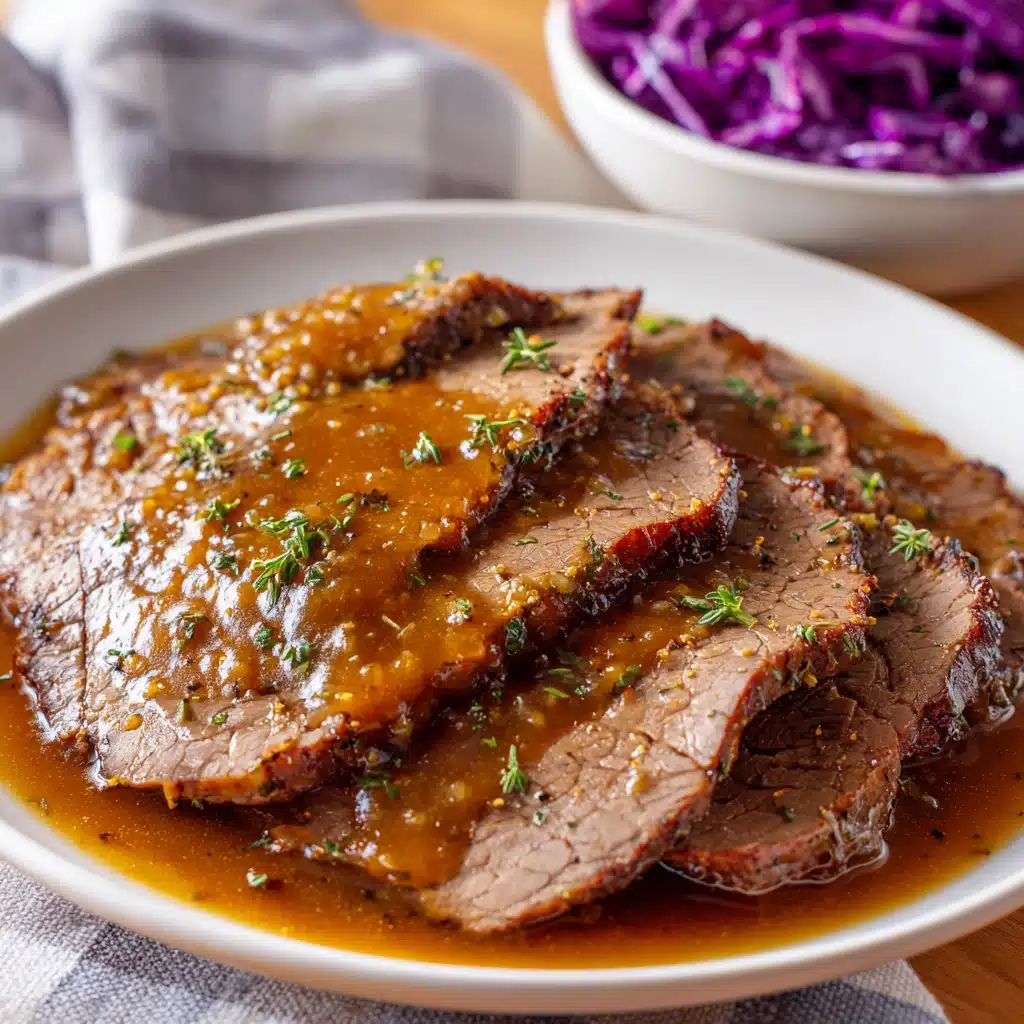
Garnishes
Top your Traditional Sauerbraten with a scattering of chopped fresh parsley for color, or maybe even extra crushed gingersnaps for a little crunch. Some cooks love a squeeze of lemon juice for a bright finish or a few paper-thin onion slices on top. These small touches add restaurant-worthy polish without any fuss.
Side Dishes
The classic serving partners are fluffy potato dumplings (Kartoffelklöße) or buttery egg noodles, which soak up that luscious, tangy gravy. Red cabbage (Rotkohl) is also a must, its gentle sweetness playing off the richness of the beef. If you want to keep it simple, creamy mashed potatoes work beautifully too.
Creative Ways to Present
While serving in a big family-style platter is timeless, you can go modern by plating individual portions with artful swirls of sauce and fresh herbs. Try layering slices of Traditional Sauerbraten over crisp toasted rye for hearty open-faced sandwiches, or tuck slivers into sliders with a dollop of sauerkraut for a playful twist. This dish handles leftovers beautifully, so don’t hesitate to get creative!
Make Ahead and Storage
Storing Leftovers
Leftover Traditional Sauerbraten just gets better with time, as the flavors continue to meld. Store slices and any extra sauce in airtight containers in the refrigerator for up to four days. Always allow the food to cool to room temperature before chilling, to keep everything fresh.
Freezing
For longer storage, Traditional Sauerbraten freezes very well. Slice the beef and ladle the sauce over the top, then seal tightly in freezer-safe containers or bags. Thaw overnight in the fridge before reheating, and enjoy up to three months later—that delicious tangy sauce will protect the meat from freezer burn.
Reheating
Gently reheat in a saucepan over low heat, occasionally stirring so the sauce doesn’t stick or scorch. If the sauce seems too thick after chilling, just add a splash of beef broth or water to loosen it up. Alternatively, microwave single portions in a covered dish, using short intervals and stirring in between.
FAQs
Can I use a different cut of meat for Traditional Sauerbraten?
Absolutely! While beef chuck or rump is classic, brisket also works wonderfully. Just choose a cut with enough marbling to remain juicy after the long marinade and braise.
What if I can’t find juniper berries?
No worries—while juniper berries are traditional, you can skip them or substitute a small sprig of fresh rosemary for a similar earthy, piney note.
Is it possible to marinate for less than three days?
The true character of Traditional Sauerbraten comes from a slow, long marinade, but if you’re short on time, aim for at least 24 hours. The flavor will be less intense, but still delicious!
Can this dish be made gluten-free?
Yes! Swap out traditional gingersnaps for your favorite gluten-free brand or use gluten-free gingerbread crumbs for thickening the sauce without compromising flavor.
What’s the secret to really tender Sauerbraten?
It’s all about patience: allow a thorough marinating process, cook the meat slow and low, and make sure not to skip resting the roast before slicing. Every step is designed to help the beef break down into fork-tender perfection.
Final Thoughts
This Traditional Sauerbraten is a true celebration of German culinary tradition—tangy, succulent, and soul-warming. If you’ve been searching for a dish that turns any meal into an occasion, give this recipe a try and let it win your heart as completely as it has mine. Your kitchen will be filled with joy, tempting aromas, and happy eaters eager for seconds!

